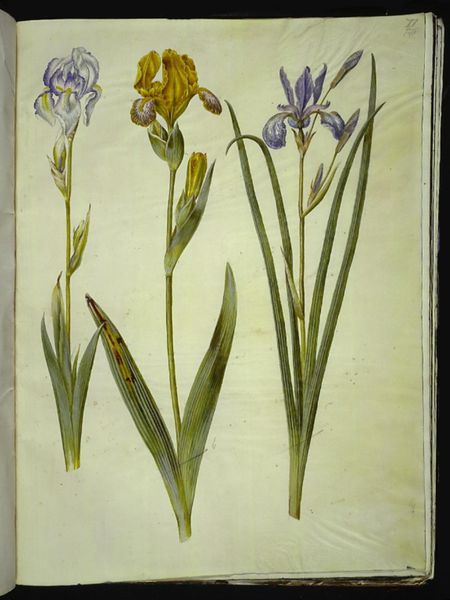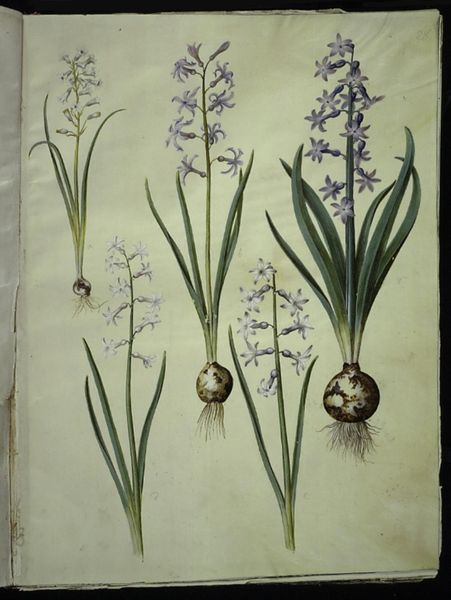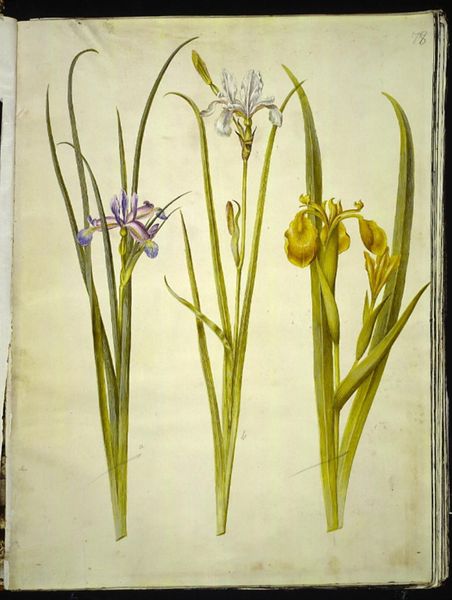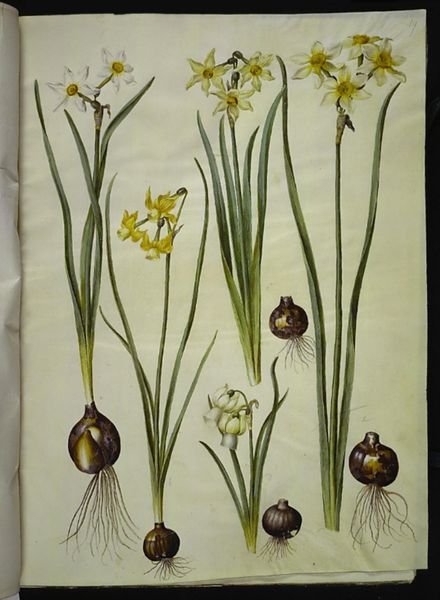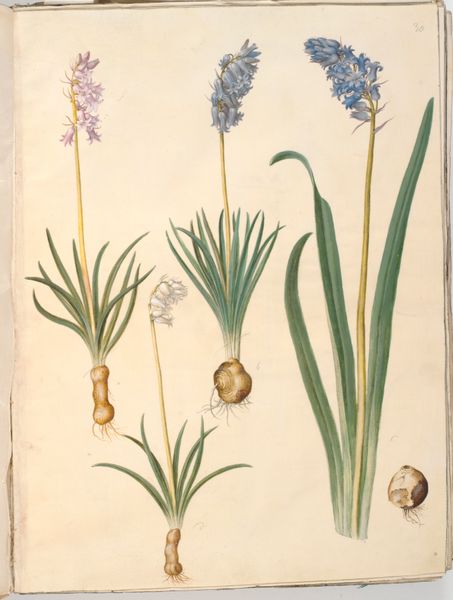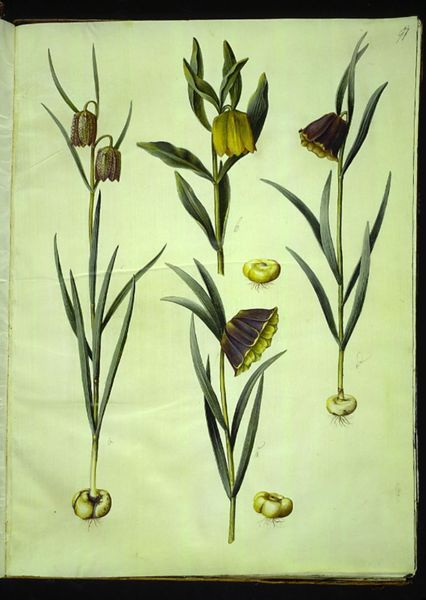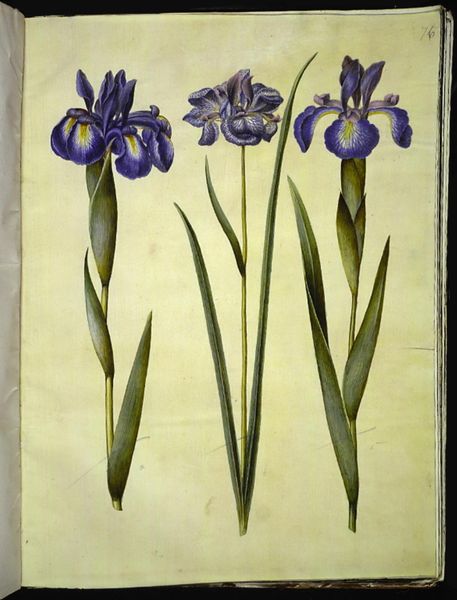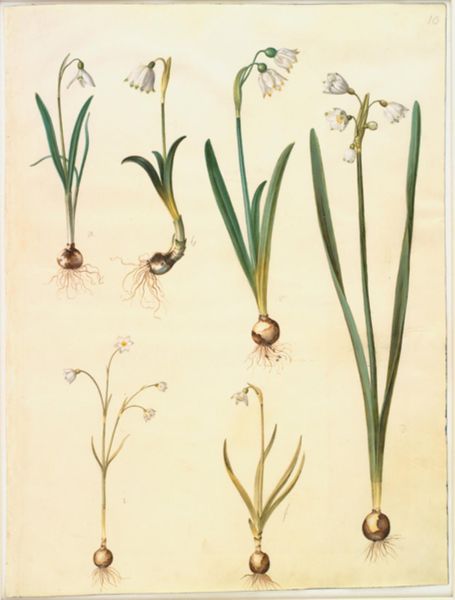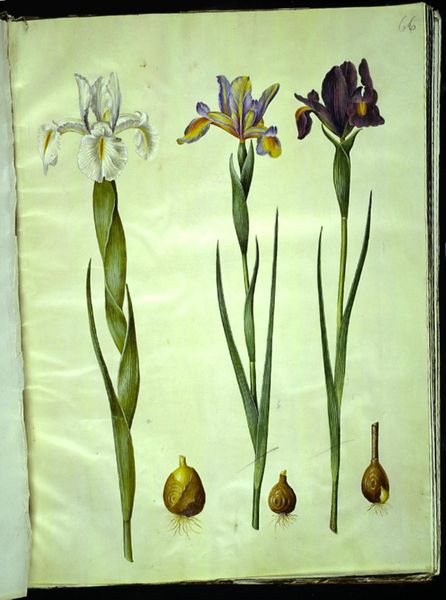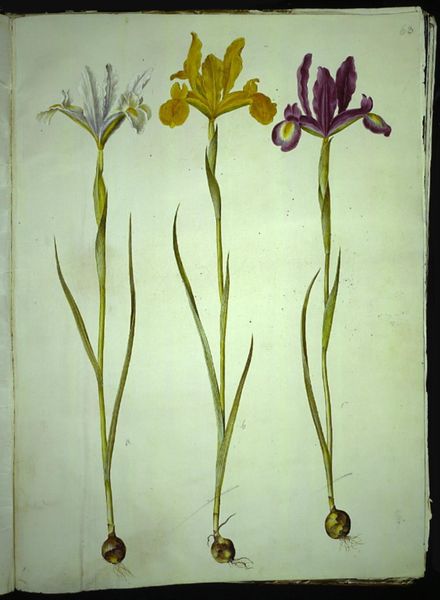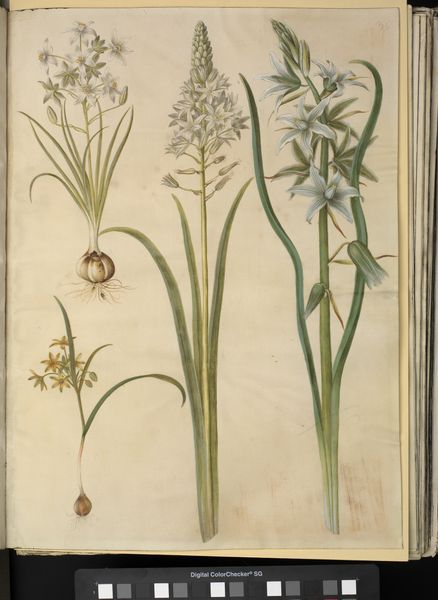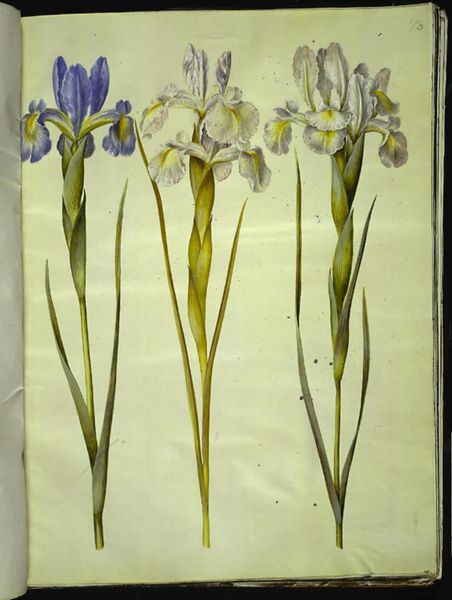
Hyacinthus orientalis (almindelig hyacint); Muscari comosum (duskhyacint); Brimeura amethystina (pyrenæisk hyacint) 1649 - 1659
0:00
0:00
drawing, gouache, watercolor, pen
#
drawing
#
gouache
#
watercolor
#
coloured pencil
#
naive art
#
pen
#
watercolor
#
realism
Dimensions: 505 mm (height) x 385 mm (width) (bladmaal)
Hans Simon Holtzbecker rendered these three hyacinths, Hyacinthus orientalis, Muscari comosum, and Brimeura amethystina, in precise detail using watercolor on paper. The composition is neatly organized, with each plant meticulously depicted alongside its bulb, emphasizing their botanical structure. Holtzbecker's approach is analytical; the plants are not romanticized but presented as specimens, each element rendered with careful attention to form, color, and texture. The linearity in the stems and leaves contrasts subtly with the clustered, complex shapes of the flowers, creating a visual rhythm that guides the eye. The palette is restrained, focusing on naturalistic tones that highlight the subtle variations in the plants’ surfaces. The artwork can be interpreted through the lens of structuralism. The artist's emphasis on the structural components of the plants—root, bulb, stem, leaf, flower—invites us to consider the underlying biological framework of nature itself. This representation transcends mere aesthetics, functioning as a study of nature’s inherent order. Holtzbecker employs a semiotic system to communicate botanical information, where each visual element acts as a signifier. The artist compels us to see beyond the beauty of the flowers to understand their place within a structured, knowable world.
Comments
No comments
Be the first to comment and join the conversation on the ultimate creative platform.
